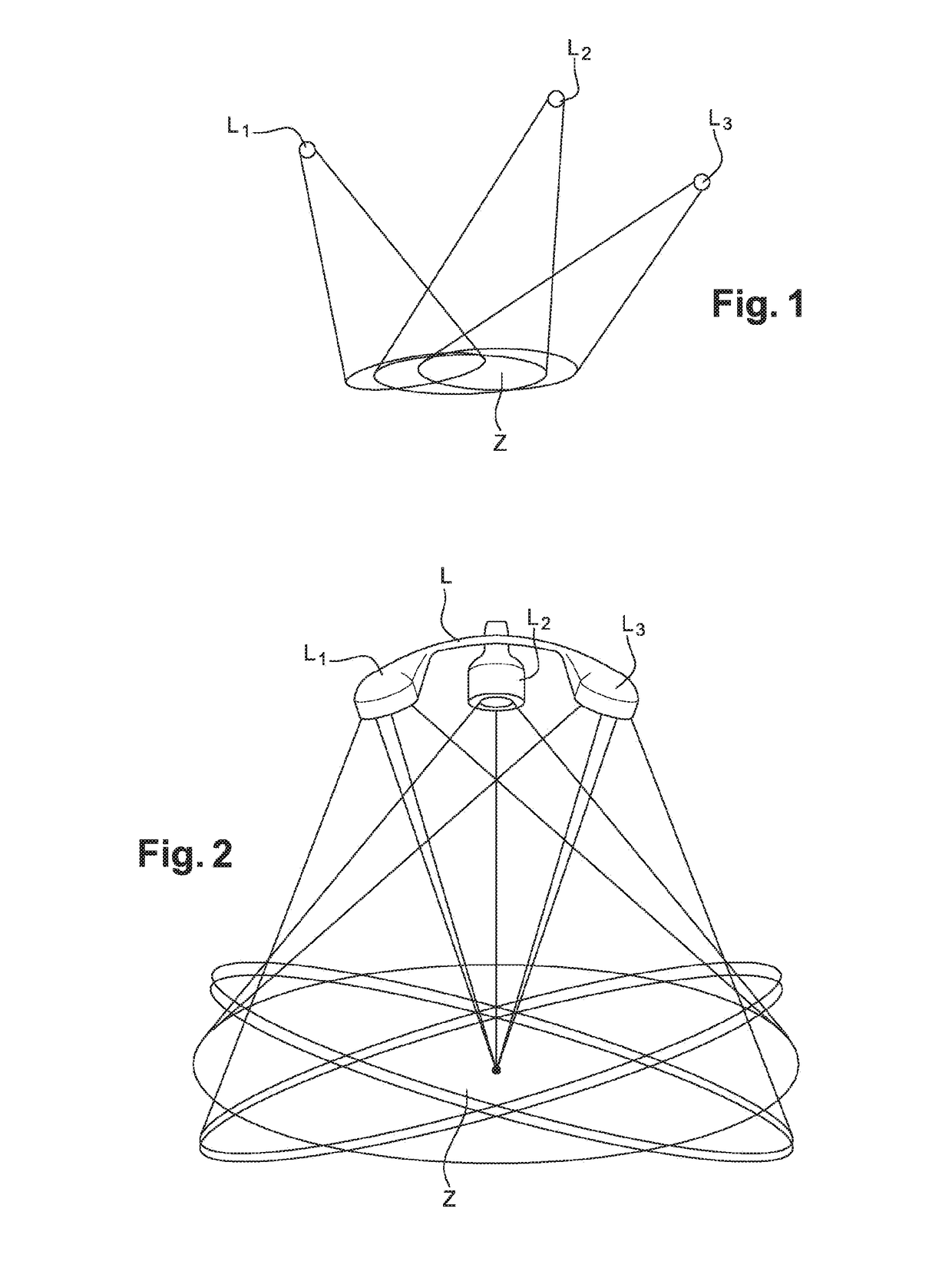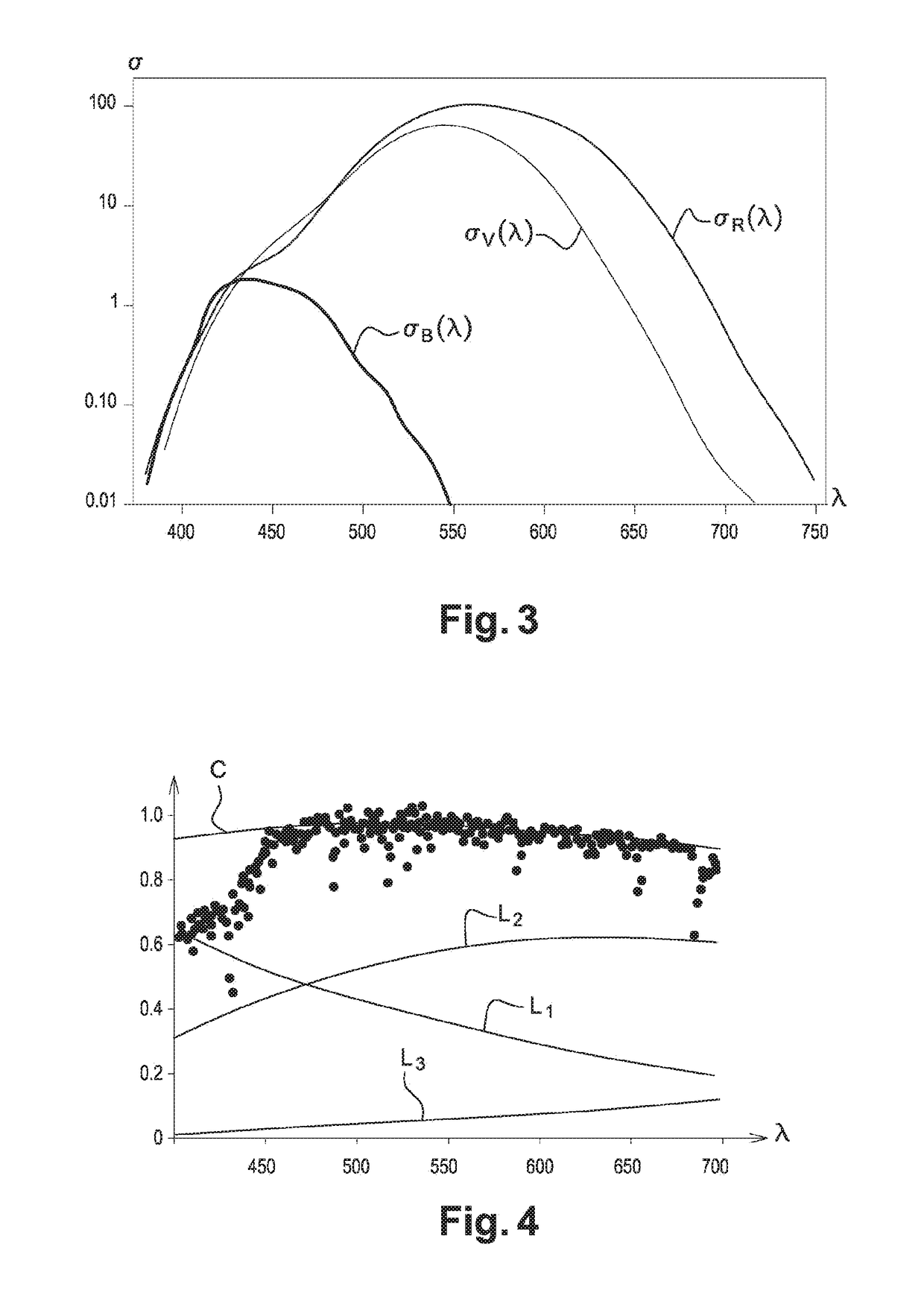Configuration of the intensity of the light sources composing a lighting system
a technology of lighting system and intensity, applied in the field of lighting system, can solve the problems of inability to configure the intensity of light sources composing the lighting system, inability to provide a reference spectrum, incomplete choice,
- Summary
- Abstract
- Description
- Claims
- Application Information
AI Technical Summary
Benefits of technology
Problems solved by technology
Method used
Image
Examples
first embodiment
[0032]FIG. 1 illustrates a first embodiment that consists of arranging independent light sources L1, L2, L3, distributed in space (for example in a room) in which the beams are oriented so as to create an overlap zone Z within which the light spectrum is closest to the reference spectrum.
second embodiment
[0033]FIG. 2 illustrates a second embodiment in which the lighting system is composed of a rigid or non-rigid structure L that fixes the different light sources L1, L2, L3 relative to each other. The structure L orients the light beams of each source so as to create the largest possible overlap zone Z within which the light spectrum is closest to the reference spectrum.
[0034]In another embodiment, the light sources are combined inside a single bulb. The overlap zone of the different sources is then very large.
[0035]Different technologies can be used to implement the light sources. In particular, Light Emitting Diodes (LEDs) may be used.
[0036]Each light source Li can be characterised by an intensity φi and a spectrum Si(λ), in which λ represents the wavelength.
[0037]Thus, the synthetic spectrum Ss(λ) of a lighting system composed of n light sources L1, L2, L3, . . . Li, . . . Ln, can be written as the sum of the spectra Si(λ) of each of these sources, weighted by their intensities φi...
PUM
 Login to View More
Login to View More Abstract
Description
Claims
Application Information
 Login to View More
Login to View More - R&D
- Intellectual Property
- Life Sciences
- Materials
- Tech Scout
- Unparalleled Data Quality
- Higher Quality Content
- 60% Fewer Hallucinations
Browse by: Latest US Patents, China's latest patents, Technical Efficacy Thesaurus, Application Domain, Technology Topic, Popular Technical Reports.
© 2025 PatSnap. All rights reserved.Legal|Privacy policy|Modern Slavery Act Transparency Statement|Sitemap|About US| Contact US: help@patsnap.com


